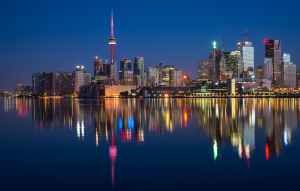
The U.S.-Canada border deal and what it really means

A day after U.S. President Joe Biden and Canada’s Prime Minister Justin Trudeau announced changes to the Safe Third Country Agreement after a record number of asylum seekers arrived in Canada via unofficial border crossings, Canada began sending asylum seekers back to the U.S. after some tried crossing into Quebec from Roxham Road in Champlain, N.Y.
The Safe Third Country Agreement between Canada and the United States is part of the U.S.–Canada Smart Border Action Plan. The Agreement, signed in 2002 and made effective in 2004, originally meant asylum seekers crossing into either Canada or the United States at formal border crossings were turned back and told to apply for asylum in the first “safe” country they arrived in.
The Additional Protocol to the STCA, which came into effect on March 25, 2023, follows completion of regulatory amendments across the entire land border of 6,416 km (3,987 miles), including internal waterways.
The expansion took effect as of 12:01 a.m. EDT on March 25, 2023. If a migrant crosses the border into Canada from the U.S. to make an asylum (refugee) claim and does not meet one of the Agreement’s exceptions, they will be returned to the U.S.
Roxham Road, which had become a notorious unofficial crossing for asylum seekers into Canada, closed at midnight on Saturday, March 25, but dozens of migrants from Africa, Haiti, and Latin and South America crossed anyway just after midnight, including one group with a baby and a toddler. Police took them into custody, warning them they could be turned around.
Police also unveiled a new sign near the dirt path linking New York State with the province of Quebec, informing people they could be arrested and returned to the United States if they crossed.
Reuters reported that confusion reigned at a bus station early on Saturday, where about 25 people from Venezuela, Haiti, Ecuador, and Peru milled about, wondering what to do next.
Under the revised Agreement, refugee claimants are required to request refugee protection in the first safe country they arrive in, unless they qualify for an exception to the Agreement. Asylum seekers make a refugee claim in Canada at a port of entry or online.
The Immigration and Refugee Protection Act requires that every person seeking to enter Canada must appear for an examination at a port of entry to determine whether they have a right to enter Canada or may become authorized to enter and remain in Canada.
Exceptions to the Agreement consider the importance of family unity, best interests of children, and public interest.
There are four types of exceptions:
- Family member
- Unaccompanied minors
- Document holder
- Public interest
Family member exceptions
Refugee claimants may qualify under this category of exceptions if they have a family member who:
- is a Canadian citizen
- is a permanent resident of Canada
- is a protected person under Canadian immigration legislation
- has made a claim for refugee status in Canada that has been accepted by the Immigration and Refugee Board of Canada (IRB)
- has had their removal order stayed on humanitarian and compassionate grounds
- holds a valid Canadian work permit
- holds a valid Canadian study permit, or
- is over 18 years old and has a claim for refugee protection that has been referred to the IRB for determination (This claim must not have been withdrawn by the family member, declared abandoned or rejected by the IRB, or found ineligible for referral to the IRB.)
Unaccompanied Minors Exception
Refugee claimants may qualify under this category of exceptions if they are minors (under the age of 18) who:
- are not accompanied by their mother, father, or legal guardian
- have neither a spouse nor a common-law partner, and
- do not have a mother, father, or legal guardian in Canada or the United States
Document Holder Exceptions
Refugee claimants may qualify under this category of exceptions if they:
- hold a valid Canadian visa (other than a transit visa)
- hold a valid work permit
- hold a valid study permit
- hold a travel document (for permanent residents or refugees) or other valid admission document issued by Canada, or
- are not required (exempt) to get a temporary resident visa to enter Canada but require a U.S.–issued visa to enter the U.S.
Public Interest Exceptions
Refugee claimants may qualify under this category of exceptions if:
They have been charged with or convicted of an offense that could subject them to the death penalty in the U.S. or a third country.
However, a refugee claimant is ineligible if they have been found inadmissible in Canada on the grounds of security, for violating human or international rights, or for serious criminality, or if the minister finds the person to be a danger to the public.
The writer is publisher of NewsAmericasNow.com – The Black Immigrant Daily News.
The post The U.S.-Canada border deal and what it really means appeared first on New York Amsterdam News.